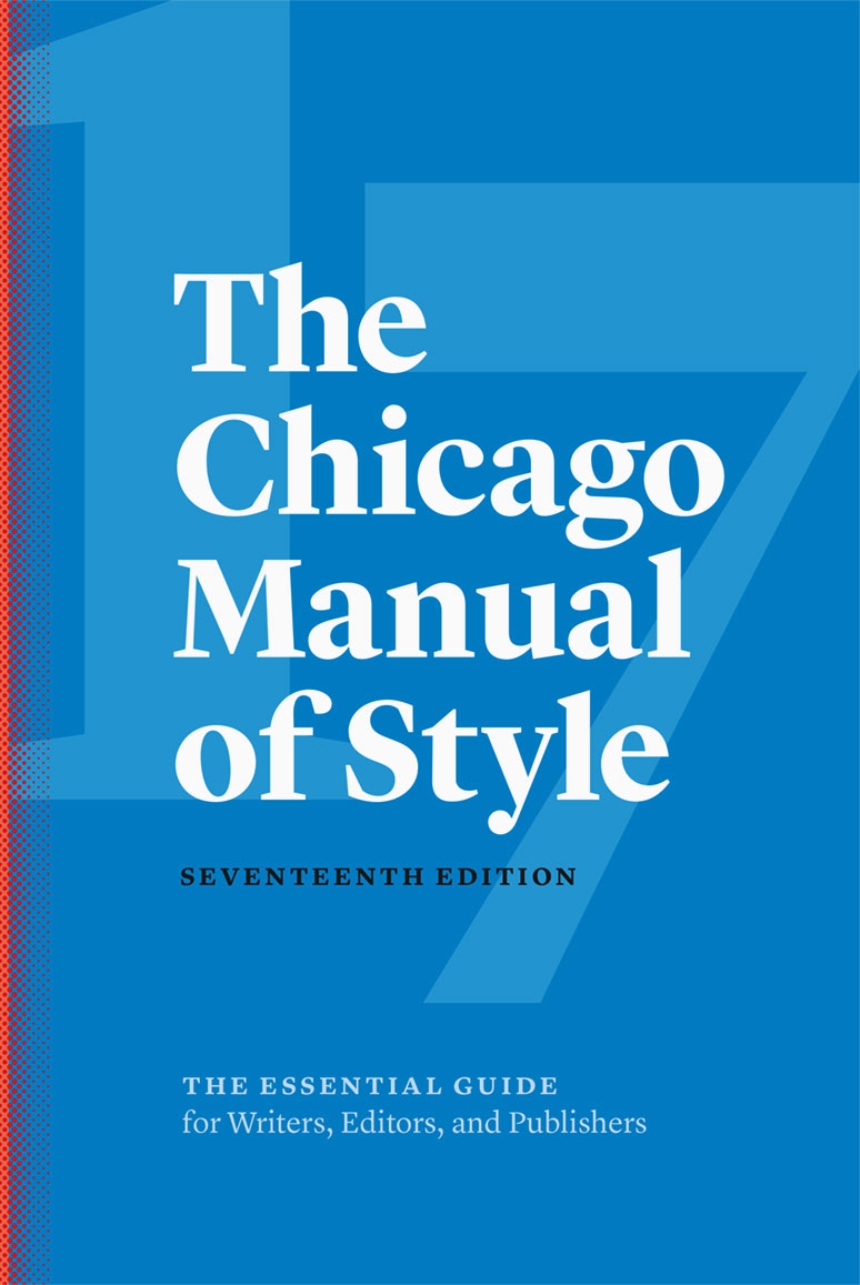
 The Chicago Manual of Style (CMOS) is most commonly used by those working in literature, history, and the arts. This resource, revised according to the 17th edition of CMOS, offers examples for the general format of CMOS research papers, footnotes/endnotes, and the bibliography. For more information, please consult the Chicago Manual of Style (17th edition).
The Chicago Manual of Style (CMOS) is most commonly used by those working in literature, history, and the arts. This resource, revised according to the 17th edition of CMOS, offers examples for the general format of CMOS research papers, footnotes/endnotes, and the bibliography. For more information, please consult the Chicago Manual of Style (17th edition).
The preferred form of Chicago at St. Andrews is Notes/Bibliography.
You can access the official Chicago Manual of Style and other Chicago aides online.
Notes
1. Zadie Smith, Swing Time (New York: Penguin Press, 2016), 315–16.
2. Brian Grazer and Charles Fishman, A Curious Mind: The Secret to a Bigger Life (New York: Simon & Schuster, 2015), 12.
Shortened notes
3. Smith, Swing Time, 320.
4. Grazer and Fishman, Curious Mind, 37.
Bibliography entries (in alphabetical order)
Grazer, Brian, and Charles Fishman. A Curious Mind: The Secret to a Bigger Life. New York: Simon & Schuster, 2015.
Smith, Zadie. Swing Time. New York: Penguin Press, 2016.
In a note, cite specific pages. In the bibliography, include the page range for the chapter or part.
Note
Shortened note
Bibliography entry
In some cases, you may want to cite the collection as a whole instead.
Note
Shortened note
Bibliography entry
Notes
Shortened notes
4. Satterfield, “Livy,” 172–73.
5. Keng, Lin, and Orazem, “Expanding College Access,” 23.
6. LaSalle, “Conundrum,” 101.
Bibliography entries (in alphabetical order)
Keng, Shao-Hsun, Chun-Hung Lin, and Peter F. Orazem. “Expanding College Access in Taiwan, 1978–2014: Effects on Graduate Quality and Income Inequality.” Journal of Human Capital 11, no. 1 (Spring 2017): 1–34. https://doi.org/10.1086/690235.
LaSalle, Peter. “Conundrum: A Story about Reading.” New England Review 38, no. 1 (2017): 95–109. Project MUSE.
Satterfield, Susan. “Livy and the Pax Deum.” Classical Philology 111, no. 2 (April 2016): 165–76.
Notes
1. “Privacy Policy,” Privacy & Terms, Google, last modified April 17, 2017, https://www.google.com/policies/privacy/.
2. “About Yale: Yale Facts,” Yale University, accessed May 1, 2017, https://www.yale.edu/about-yale/yale-facts.
3. Katie Bouman, “How to Take a Picture of a Black Hole,” filmed November 2016 at TEDxBeaconStreet, Brookline, MA, video, 12:51, https://www.ted.com/talks/katie_bouman_what_does_a_black_hole_look_like.
Shortened notes
4. Google, “Privacy Policy.”
5. “Yale Facts.”
6. Bouman, “Black Hole.”
Bibliography entries (in alphabetical order)
Bouman, Katie. “How to Take a Picture of a Black Hole.” Filmed November 2016 at TEDxBeaconStreet, Brookline, MA. Video, 12:51. https://www.ted.com/talks/katie_bouman_what_does_a_black_hole_look_like.
Google. “Privacy Policy.” Privacy & Terms. Last modified April 17, 2017. https://www.google.com/policies/privacy/.
Yale University. “About Yale: Yale Facts.” Accessed May 1, 2017. https://www.yale.edu/about-yale/yale-facts.
Notes
Shortened notes
Bibliography entries (in alphabetical order)